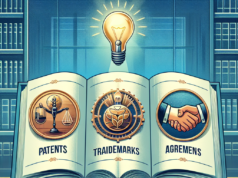
In an age where creativity flourishes alongside technological advancements, the issue of media copyright has emerged as a contentious battleground. While copyright laws are designed to protect the rights of creators, they often inadvertently stifle innovation and limit access to cultural works. This article delves into the complexities of media copyright, exploring its historical evolution, its impact on creative expression, notable legal battles, the role of technology, and future perspectives on balancing protection with innovation.
Understanding Media Copyright: A Double-Edged Sword for Creators and Consumers
Media copyright serves as a protective mechanism for creators, granting them exclusive rights to their works and ensuring they receive recognition and financial compensation. However, this protective layer can also act as a double-edged sword. For creators, the fear of infringement can lead to a chilling effect, discouraging experimentation and collaboration. For consumers, stringent copyright laws can limit access to cultural content, creating barriers to enjoyment and education. As the digital landscape continues to evolve, the tension between protecting creators and fostering a vibrant cultural exchange becomes increasingly pronounced.
The Evolution of Copyright Laws: Historical Context and Modern Implications
Copyright laws have undergone significant transformations since their inception in the early 18th century. Initially designed to protect authors’ rights for a limited time, these laws have expanded to encompass a wide array of media, including music, film, and digital content. The Berne Convention of 1886 and subsequent treaties established international standards for copyright protection, but the rise of the internet has complicated enforcement and compliance. Today, creators face a landscape where their works can be easily copied and distributed, raising questions about the adequacy of existing laws in safeguarding their rights while also promoting public access to information.
The Impact of Copyright on Creative Expression: A Barrier or a Shield?
The impact of copyright on creative expression is a subject of ongoing debate. On one hand, copyright serves as a shield, empowering creators to protect their intellectual property and incentivizing them to produce original works. On the other hand, it can act as a barrier, particularly for emerging artists who may find themselves entangled in legal disputes over perceived infringements. The fear of litigation can stifle creativity, leading to a homogenization of content as creators opt for safer, less innovative paths. This paradox highlights the need for a nuanced understanding of how copyright can both foster and hinder artistic expression.
Case Studies: Notable Legal Battles in the Realm of Media Copyright
Several high-profile legal battles have underscored the complexities of media copyright. One notable case is the 2016 lawsuit between the estate of Marvin Gaye and Robin Thicke over the hit song “Blurred Lines,” which resulted in a substantial damages award for Gaye’s estate. This case raised questions about the boundaries of inspiration versus infringement, igniting debates about the nature of creativity in the music industry. Another significant case is the ongoing litigation surrounding the use of sampling in hip-hop, where artists often face legal challenges for incorporating snippets of existing songs into their work. These cases illustrate the precarious balance between protecting creators and allowing for the evolution of artistic forms.
The Role of Technology in Shaping Copyright Enforcement and Creative Freedom
Technology plays a pivotal role in both enforcing copyright and enabling creative freedom. Digital platforms have revolutionized the way content is created, shared, and consumed, but they have also introduced new challenges for copyright enforcement. Automated systems, such as Content ID on YouTube, aim to identify and manage copyrighted material, yet they often lead to overreach, resulting in the wrongful removal of legitimate content. Conversely, technology also empowers creators by providing tools for collaboration and distribution that were previously unavailable. As the landscape continues to shift, the challenge lies in harnessing technology to protect creators while ensuring that it does not become a tool for censorship.
Future Perspectives: Balancing Copyright Protection with Artistic Innovation
Looking ahead, the future of media copyright will require a delicate balance between protecting creators’ rights and fostering an environment conducive to artistic innovation. Policymakers, industry stakeholders, and creators must engage in meaningful dialogue to develop frameworks that adapt to the rapidly changing digital landscape. Potential solutions may include revising copyright duration, implementing fair use provisions, and exploring alternative licensing models that promote collaboration. By prioritizing both protection and access, the creative community can thrive, ensuring that the arts remain a dynamic and evolving reflection of society.
The battle for creative freedom in the realm of media copyright is far from over. As the landscape of creativity continues to evolve, it is imperative that stakeholders work together to address the challenges posed by existing copyright laws. By fostering an environment that values both protection and innovation, we can ensure that the arts remain a vibrant and accessible part of our cultural heritage. The future of media copyright will ultimately depend on our ability to navigate these complexities, striking a balance that honors the rights of creators while promoting the free exchange of ideas and artistic expression.

























